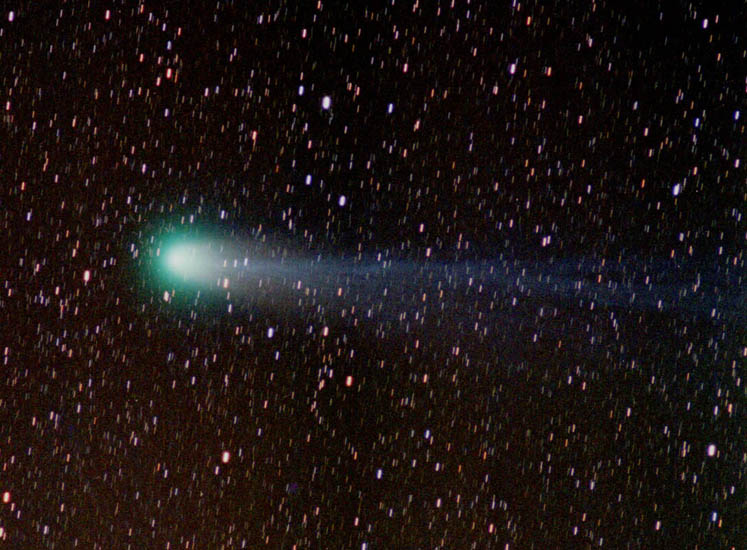

In the spring of 1996 the brightest comet since comet West (1975) visited earth. Due to the short distance in which the comet passed earth, it was an extraordinary event for all astronomers.
A comet consists from 3 parts:
1.) The nucleus of a comet can be described best as a "dirty snowball". It consists of water ice and dry ice, traces of carbon monoxide, cyanide compounds and even complex organic substances.
2.) The coma consists of gas and dust evaporating from the core into the immediate environment.
3.) The tail is formed by those particles of the coma which are blown away by the so-called solar wind, a continuous flow of elementary particles emitted by the sun.
These particles ionize the gas which in turn glows in colours characteristic for its chemical nature. The chemical variety of a comet's nucleus can be viewed even with amateur instrumentation: The greenish coma around the comet's nucleus emitts light from ionized dicarbon molecules. The inner part of the comet's tail has a neutral color resulting from dust particles which reflect the yellowish sunlight. The violet color from the outer regions is emission light from ionized carbon monoxide.